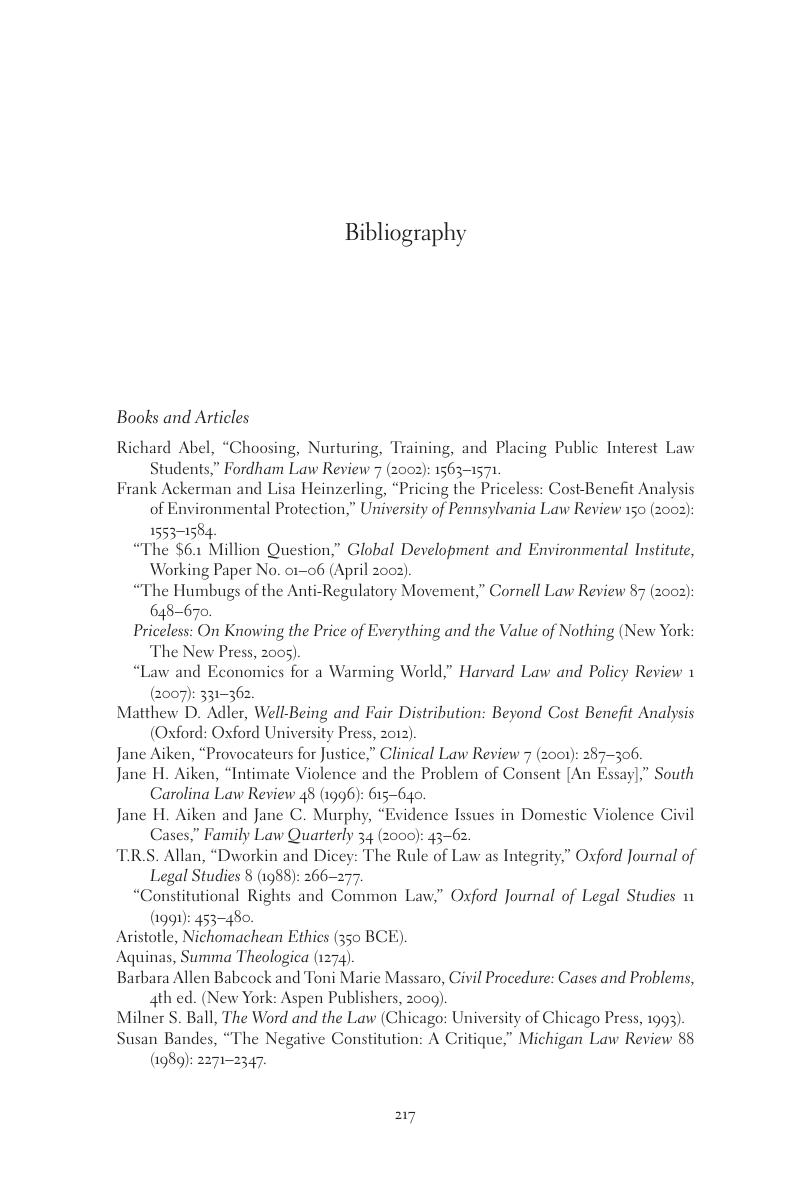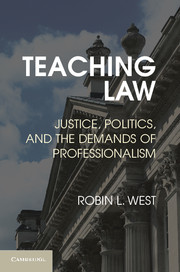Book contents
- Frontmatter
- Dedication
- Contents
- Acknowledgment
- Introduction The Trouble with Law Schools
- 1 The Unbearable Lightness of Justice
- 2 Politics and Its Discontents
- 3 The Bifurcated Academy: The Practice versus the Study of Law
- 4 Confronting Our Existential Challenge
- Some Conclusions
- Bibliography
- Index
- References
Bibliography
Published online by Cambridge University Press: 05 June 2014
- Frontmatter
- Dedication
- Contents
- Acknowledgment
- Introduction The Trouble with Law Schools
- 1 The Unbearable Lightness of Justice
- 2 Politics and Its Discontents
- 3 The Bifurcated Academy: The Practice versus the Study of Law
- 4 Confronting Our Existential Challenge
- Some Conclusions
- Bibliography
- Index
- References
Summary

- Type
- Chapter
- Information
- Teaching LawJustice, Politics, and the Demands of Professionalism, pp. 217 - 236Publisher: Cambridge University PressPrint publication year: 2013



